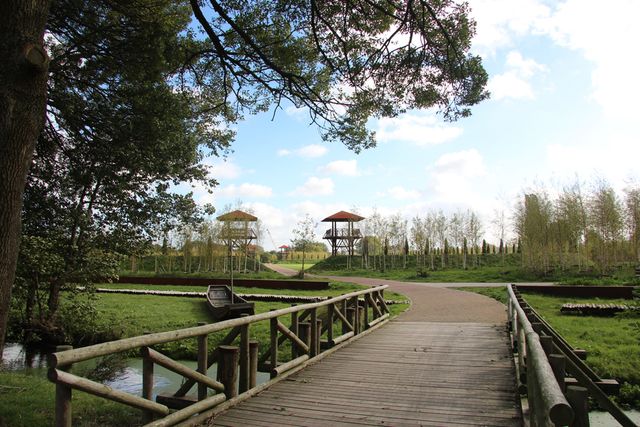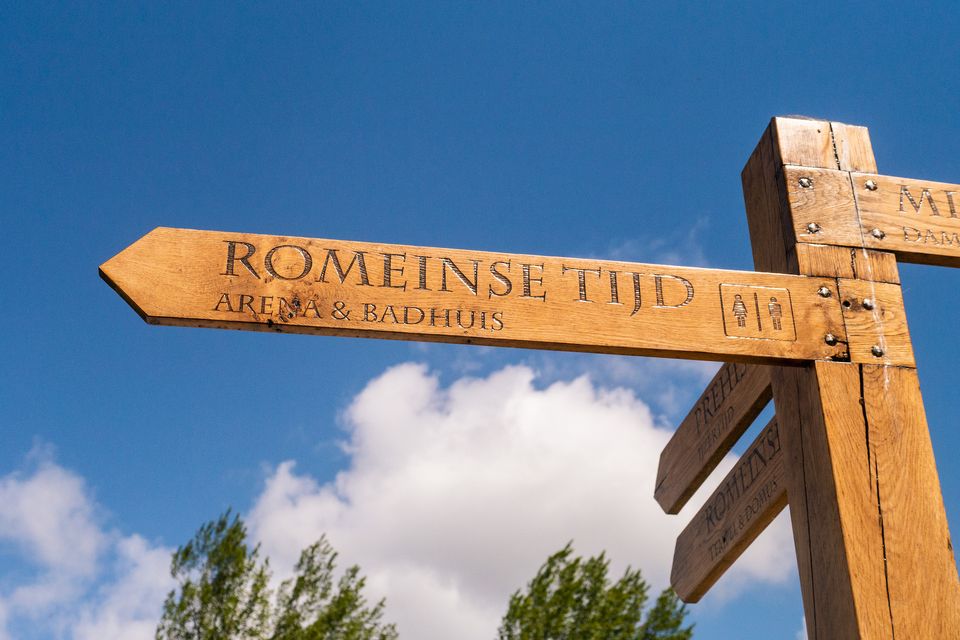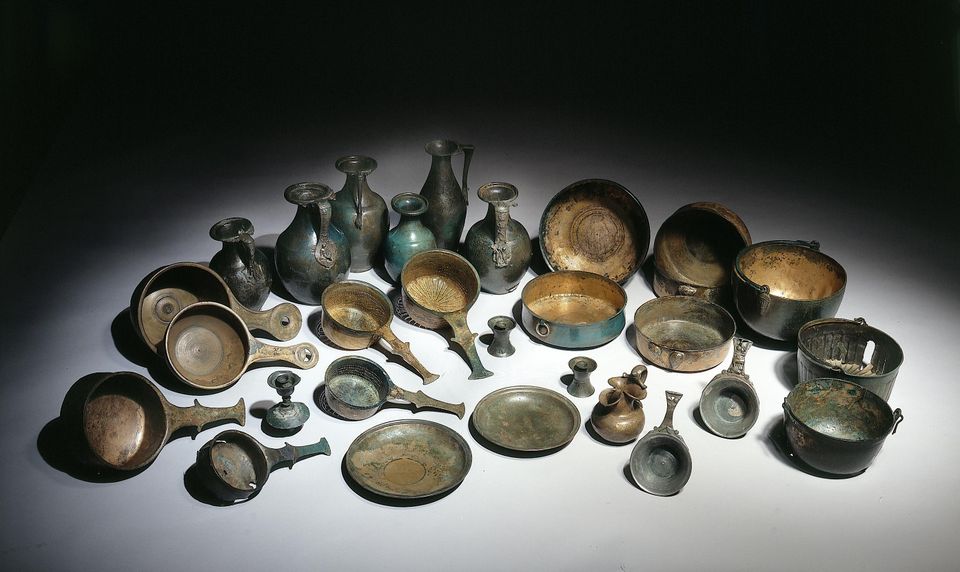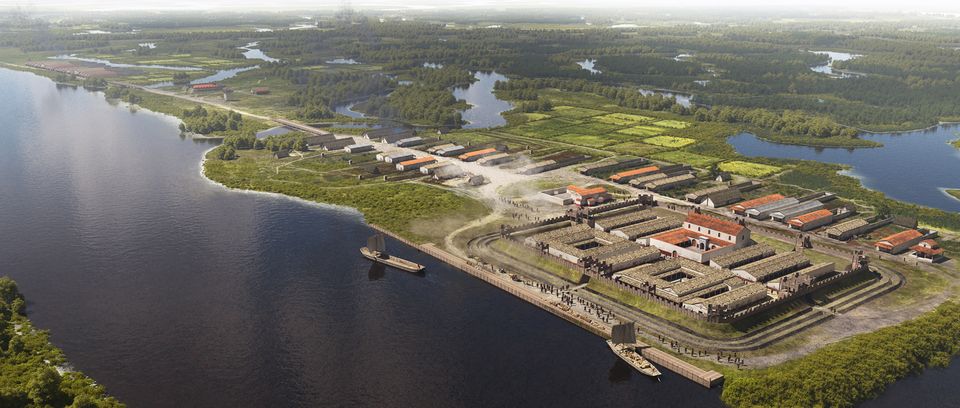THE ROMANS IN THE NETHERLANDS
The Roman period in the Netherlands spanned more than five hundred years – a fascinating period that witnessed all manner of cultural developments. The Romans were responsible for a seismic shift in many different areas. Only the southern half of the Netherlands was incorporated into the Roman Empire. The Rhine marked the boundary of the empire here and this frontier forms the oldest section of the Roman limes.
Beginning of the Roman period
The Roman period in the Netherlands began in the year 19 BC, when two or three legions established a camp in Nijmegen. During these early years the Romans in our region focused their attention primarily on military activities. In an ongoing process of action and reaction, they turned the Rhine into a secure waterway – rivers were, after all, the motorways of the ancient world – and a chain of forts was constructed along it. From the year 47 AD, when Emperor Claudius shifted his focus from Germania to Britannia, the Rhine became a river frontier, which we now refer to as the limes.

Prosperity
The Roman Netherlands reached its economic and cultural peak in the second century. Romanisation extended into the most remote rural areas, where it mixed with local traditions. A heterogeneous society therefore developed that absorbed influences from right across the empire. The Romans introduced cities and citizenship – previously a completely unfamiliar concept, but one that, from that moment on, became a key pillar of (Western) history. They are also renowned for their engineering skill, which found expression both in their architecture and in the roads, bridges and canals that they built. The peoples living to the north of the Rhine were influenced very little by the Romans. Although there was some contact for trade, this had no or hardly any impact on their way of life.
Frankicisation
The third century was dominated by a major crisis for the Roman Empire that resulted in the complete depopulation of the rural parts of the Netherlands. In the Western Netherlands the limes was even totally abandoned. At the beginning of the fourth century the Roman Empire clawed its way back up, thanks in part to Frankish newcomers from the Northern Netherlands. The Franks settled in the countryside and also served in the Roman army, setting in motion a Frankicisation of society. In the fourth and fifth centuries the influence of the central authorities in Rome slowly began to wane, marking the start of a gradual transition from the Roman period to the Middle Ages.

Archaeology and visibility
In the Netherlands little heritage from the Roman period remains above ground, although beneath the ground it is a different story. The wet soil here has helped to preserve organic materials, such as wood and leather, in particular. As a result, the Netherlands has become renowned due to the large number of ships discovered here. The story of the Romans is told in the Netherlands not only at museums, but also through visualisations constructed in various locations.
UNESCO World Heritage
Following on from Hadrian’s Wall (1987), the Upper German-Raetian Limes (2005) and the Antonine Wall (2008), other parts of the limes will also be nominated for inscription on UNESCO’s world heritage list. These fall under the common heading of ‘Frontiers of the Roman Empire’. The Netherlands and the German State of North Rhine-Westphalia have jointly nominated the Lower German Limes: the part of the limes running from the North Sea to Rheinbrohl.
What is unusual about the nomination of the Lower German Limes is that the vast majority of it lies underground, making it an archaeological monument. A considerable effort will therefore be needed to ensure the monument is also made visible above ground. UNESCO is currently considering the application and a decision is expected in the summer of 2021.

Where can you experience the Roman Netherlands?
National Museum of Antiquities, Leiden
This is the Netherlands’ oldest historical museum and was established in the early nineteenth century. Alongside classical Roman and Egyptian collections, it also has an extensive section focusing on the Roman Netherlands. www.rmo.nl
Museum Het Valkhof, Nijmegen
Nijmegen is by far the most important Roman site in the Netherlands. It is therefore no surprise that it is also home to an excellent museum presenting some of the city’s rich Roman heritage to the public. www.museumhetvalkhof.nl
Thermenmuseum, Heerlen
The most extensive visible remains of the Roman Netherlands can be found in Heerlen, where parts of a large bathhouse have been preserved. This museum, which has recently undergone a complete renovation, is built on top of these remains and enjoys an international profile. www.thermenmuseum.nl
Archeon, Alphen aan den Rijn
The archaeological living museum Archeon is the only place in the Netherlands where you can see a number of reconstructions of Roman buildings. It is also home to the famous ships that were discovered in Zwammerdam. www.archeon.nl

Fort bij Vechten, Bunnik
Next to Fort bij Vechten, a fort that once formed part of the water-based defences known as the Hollandse Waterlinie (Dutch Water Line), the outline of the Roman fort Fletio has been made visible. Fort bij Vechten houses the Water Line Museum and also features a small exhibition about the Roman fort. www.waterliniemuseum.nl
Park Matilo, Leiden
In Leiden the outline of the Roman fort (castellum) Matilo has been used to create a city park, including ramparts and climbable watchtowers. Artworks reference the site’s Roman past.
Meinerswijk, Arnhem
This is a place where two important historical lines intersect: the Roman limes and the 20th-century IJssellinie. The headquarters of the Roman castellum that once stood here have been made visible in the polder using gabion walls.
Castellum Hoge Woerd, De Meern
A modern castellum has been constructed on top of the foundations of the fort that was discovered here. This is a multifunctional building with a museum, restaurant, theatre, children’s play farm and a permanent exhibition of the 25-metre-long cargo ship De Meern 1. www.castellumhogewoerd.nl




